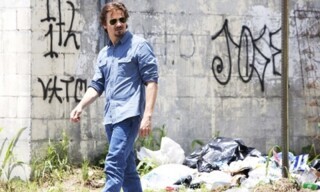‘Kill the Messenger’
John Perry
In January 1983, police in Los Angeles arrested frogmen bringing 400 pounds of cocaine ashore from a Colombian freighter. But they missed their main target, the drug importer Norwin Meneses, who may have been tipped off by officials. In August 1986, a US Customs informant, Joseph Kelso, told his handlers that Drug Enforcement Administration officials in Costa Rica were sharing profits from Meneses’s LA drug shipments. The Costa Rican police arrested Kelso.
In October 1986, police hit the LA home of Meneses’s business partner, Danilo Blandon. He had only a ‘thimbleful’ of cocaine and was released after a few hours; $850,000 sat unnoticed in a safe at the bottom of his swimming pool (or so Blandon told a DEA informant; he later denied it to the Justice Department). Their main crack distributor, ‘Freeway’ Rick Ross, was arrested the same month, but the case was dropped for lack of evidence. When he eventually went to prison in 1990, Ross served only four years, though he boasted he had been grossing $1 million a day.
Blandon and Meneses were Nicaraguans who’d fled to the US from the 1979 Sandinista revolution. They imported drugs into LA and other cities throughout the 1980s. Meneses was eventually caught by a sting in Nicaragua in 1991, involving $15 million worth of drugs. He was sentenced to 30 years in jail but was out by 1997. Blandon was arrested in 1992 in San Diego. The prosecutor argued that the scale of his drug dealing meant his sentence should be ‘off the charts’: life plus a $4 million fine. But he served only two years: he was released and taken onto the DEA payroll as an informant.
The ‘frogman’ case gave the first hint of why the two were getting away with drug dealing on a massive scale. One of the defendants petitioned for the return of $36,000 seized as drug money, arguing that it was intended to support the Contras, the rebel army set up by right-wing Nicaraguans with backing from the CIA. The Justice Department handed the money back. Blandon later testified that his first drug deal, in 1981, had been to earn money for the Contras. Meneses recruited him. They started using Freeway Rick’s payments to fund the Contra war. Both worked for Adolfo Calero, the head of the main Contra army, who was paid $12,500 a month by the CIA for several years.
Gary Webb, a reporter for the San Jose Mercury News, received a tip-off in 1995 that led him to expose the CIA connection to drug dealing. The stories about Meneses and Blandon, and many more, appeared in the paper from August 1996. In October, the Washington Post, LA Times and New York Times all ran stories attacking Webb. They said that the Contra payments involved only thousands of dollars, not millions. They dismissed the connection between the massive drug shipments and the growth of crack use in LA. They quoted CIA sources who denied any involvement with Blandon and Meneses. Succumbing to the pressure, the Mercury News ran an apology for Webb’s stories in May 1997. Later that year, Webb quit. No other paper would take him on. He killed himself in 2004.
Enriched by drug trafficking, Meneses and Blandon bought houses and businesses in the US, Nicaragua and Costa Rica. Blandon eventually ratted on Freeway Rick and was paid $45,000 in reward. Meneses became a national assembly member under the right-wing governments that ran Nicaragua until 2006.
By the time the Contra War ended in 1988, at least 30,000 people had died. The Sandinistas had won their first election in 1984 but, largely because of the war, lost the second in 1990. The Contra footsoldiers, most of them from poor rural families in the mountainous north of Nicaragua, were promised land by the new government, and over the next decade many thousands were relocated on farms abandoned in the revolution.
The NGO I work with is helping a dozen ex-Contra families who were given title to an old sugar farm. They have nothing but the land, a shared well (a tube in the ground wide enough to take a small bucket) and houses made of plastic sheets and corrugated iron. Until we installed solar panels, they had no electricity. Our latest project has been a solar-driven pump for the well, supplying an irrigation system for the small patches of farmland. This is all the help they’ve received since they handed in their guns 25 years ago.
Kill the Messenger, the film based on Webb's 1999 book Dark Alliance, is released in the UK today. The Washington Post still thinks Webb was wrong. The New York Times, reviewing the film last year, said that it portrayed a journalist ‘betrayed... by his own calling’. Jesse Katz, one of 17 reporters the LA Times assigned to discredit Webb’s story, came closer to an apology, saying that he’d ruined his career.

Comments
Here in the strategic Anglo-European colony of Australia there was the curious matter of the Nugan Hand Trading Bank; laundering profits from the heroin trade & using the proceeds to arm Angolan rebels & the Shah of Iran (etc). Hmm...
Interestingly, the official inquiry by Lawrence Walsh (of which he gave a long and heavy-going account in his book 'Firewall') concentrates almost entirely on the Iran arms trade and barely touches on the funding from the drugs trade, which is where Gary Webb came in.